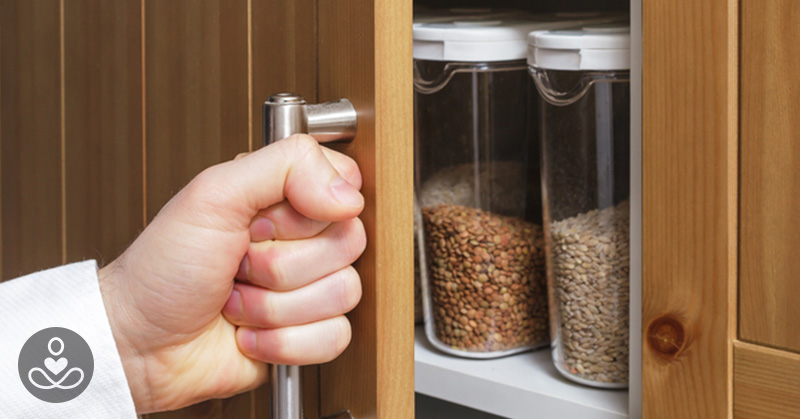Americans on average only eat about half the daily recommended amount of fiber. It’s an essential component of the food we eat, and it may help you live longer. In studies, it has been shown to help prevent and fight type 2 diabetes. It has also been shown to help prevent heart attacks and stroke.
What The Studies Show
A recently released study by The Lancet shows numerous benefits of adding fiber. It analyzed 58 clinical studies and 185 trials. The findings suggest that if 1,000 people were to shift from a low fiber diet, which consists of less than 15 g to a high fiber one, which ranges from 25g – 29g, then 13 deaths and six cases of heart disease would be prevented. Other results showed that levels of bowel cancer, type 2 diabetes, obesity, cholesterol, and blood pressure were lowered.
Fiber Helps Balance Glucose
For people with diabetes, increasing fiber intake can be a great way to help balance blood sugars to healthy levels, which in turn can help reduce insulin output. Soluble fiber is especially important because it slows the rate of absorption of sugar in the blood.
Effects of Fiber on Heart Health
Eating more healthy fiber is shown to reduce cholesterol levels. They help lower LDL cholesterol or “bad cholesterol.”Dietary fiber is found in fruits, nuts, grains, and legumes. It is most known for helping keep people regular, and it has many other applications for health.
We love Healthology SOLUBLE FIBRE BLEND. The SOLUBLE FIBRE BLEND provides 5 grams of soluble fiber from a Certified Organic, non-GMO blend of Baobab and Acacia fibers that helps with weight management, lowering cholesterol, stabilizing blood sugar, healthy gut flora, and reduced risk of heart disease. Take a scoop daily with water first thing in the morning! Get your 30 day supply at The Health Shop for $59.99 while supplies last!
Fiber helps Lower Weight
High fiber whole foods can be denser, increase chew time and be more filling than lower fiber foods. This can mean less total calorie consumption and, as a result, aid in weight loss.
When it comes to fiber and weight loss, various types can help. Prebiotic fiber has been shown to help improve risk factors for obesity potentially. It proposed to do this by helping to feed our beneficial bacteria. Different species of bacteria in our guts have been shown help improve various aspects of health, including obesity.
Types of Fiber
There are two types of fiber: soluble and insoluble. Soluble fiber is found in barley, psyllium, apples, carrots, citrus fruits, legumes, and oats. When it dissolves in water, it forms a gel-like material. Insoluble fiber moves through the digestive system and includes wheat products, nuts, and beans.
High-fiber foods are inexpensive and widely available at every supermarket. The health benefits are life-long and more extensive than merely keeping someone regular, although it does do that too.
How Much Fiber
According to researchers at the University of Otago and the University of Dundee, people need about 25 g of fiber a day at minimum, and that there are health benefits to consuming more than 30 g.
Foods With Fiber
There are plenty of options when it comes to adding more fiber into a diet. Whole grain options for pasta and bread help to pack more fiber into a diet. Cereals, nuts, beans such as lentils or chickpeas and seeds also add more fiber into a diet.
What do 30 Grams a Day Look Like?
A few dietary changes can make a big difference with fiber intake. Some great examples of fiber are:
- ½ cup of rolled oats: 9 grams
- 1 cup avocado: 10 grams
- 1 Pear, with skin: 5 grams
- ½ cup chard: 1 gram
- 1 Apple, with skin: 4.5 grams
- 1 carrot: 3 grams
We love Healthology SOLUBLE FIBRE BLEND. The SOLUBLE FIBRE BLEND provides 5 grams of soluble fiber from a Certified Organic, non-GMO blend of Baobab and Acacia fibers that helps with weight management, lowering cholesterol, stabilizing blood sugar, healthy gut flora, and reduced risk of heart disease. Take a scoop daily with water first thing in the morning! Get your 30 day supply at The Health Shop for $59.99 while supplies last!
In Conclusion
Low carb diets may cause people not to intake enough fiber. Adding more fiber doesn’t have to be challenging. There are some ways to quickly increase fiber intake at home. Leaving the skin on fruits and vegetables is one way that many people find helpful to boost fiber. Another way is to add lentils or chickpeas to salads. Adding veggies is also recommended.
Fiber has many benefits for organs and metabolism. Fiber makes people feel full and affects how fat is absorbed in the small intestine. Fiber is also a key factor for decreased constipation. With low effort and increased food awareness, it’s easy to add foods into our diet that helps increase our daily fiber intake.

Sources
- Post, Robert E., et al. “Dietary Fiber for the Treatment of Type 2 Diabetes Mellitus: A Meta-Analysis.” The Journal of the American Board of Family Medicine, American Board of Family Medicine, 1 Jan. 2012, www.jabfm.org/content/25/1/16.
- Erkkilä, A T, and A H Lichtenstein. “Fiber and Cardiovascular Disease Risk: How Strong Is the Evidence?” Current Neurology and Neuroscience Reports., U.S. National Library of Medicine, www.ncbi.nlm.nih.gov/pubmed/16407729.
- “Stroke Pictures: Anatomy Diagrams, the FAST Test, MRI Changes, and Rehab.” WebMD, WebMD, www.webmd.com/stroke/ss/slideshow-stroke-overview.
- “ How to Add More Fiber to Your Diet.” Mayo Clinic, Mayo Foundation for Medical Education and Research, 16 Nov. 2018, www.mayoclinic.org/healthy-lifestyle/nutrition-and-healthy-eating/in-depth/fiber/art-20043983.
- “ Whole Grains, Refined Grains, and Dietary Fiber.” About Heart Attacks, www.heart.org/en/healthy-living/healthy-eating/eat-smart/nutrition-basics/whole-grains-refined-grains-and-dietary-fiber.
- “How to Add More Fiber to Your Diet.” Mayo Clinic, Mayo Foundation for Medical Education and Research, 16 Nov. 2018, www.mayoclinic.org/healthy-lifestyle/nutrition-and-healthy-eating/in-depth/fiber/art-20043983.
- Gallagher, James. “The Lifesaving Food 90% Aren’t Eating Enough Of.” BBC News, BBC, 11 Jan. 2019, www.bbc.com/news/health-46827426.
- NHS Choices, NHS, www.nhs.uk/live-well/eat-well/how-to-get-more-fibre-into-your-diet/#tips-to-increase-your-fibre-intake.
- Reynolds, Andrew, et al. “Carbohydrate Quality and Human Health: a Series of Systematic Reviews and Meta-Analyses.” The Lancet, 2019, doi:10.1016/s0140-6736(18)31809-9.
- Riccardi, G, and A A Rivellese. “Effects of Dietary Fiber and Carbohydrate on Glucose and Lipoprotein Metabolism in Diabetic Patients.” Current Neurology and Neuroscience Reports., U.S. National Library of Medicine, Dec. 1991, www.ncbi.nlm.nih.gov/pubmed/1663443.
- Dietary Fiber Intake of the U.S. Population – USDA ARS. www.ars.usda.gov/ARSUserFiles/80400530/pdf/DBrief/12_fiber_intake_0910.pdf.

